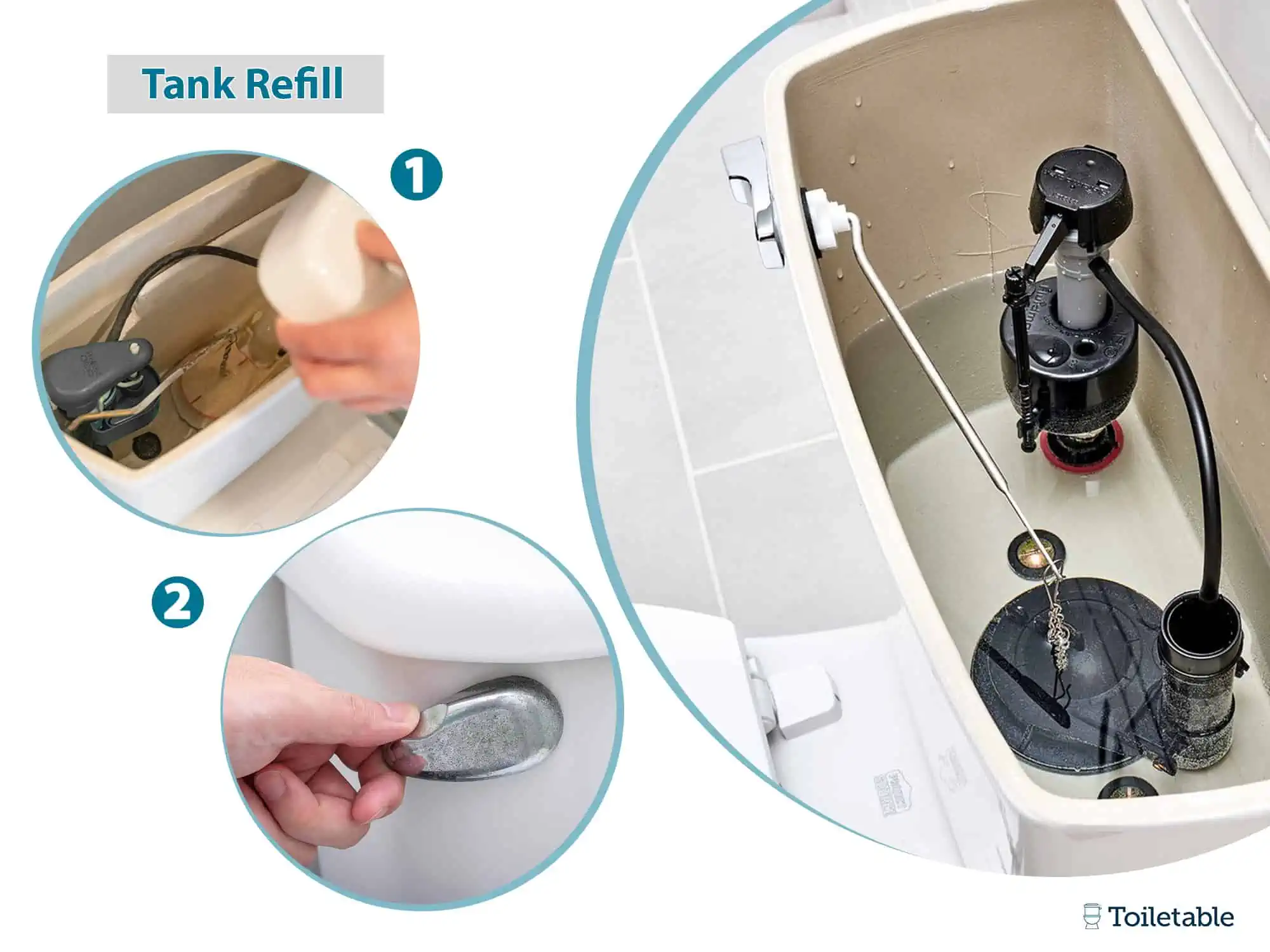We all have taken our toilet for granted before. It’s not until things stop working do we realize how much we depend on them in our everyday use.
Toilets can stop working because the water supply has been cut off, due to a power outage, plumbing issue, or something else.
So, what do you do if you find yourself in the unfortunate situation of needing to flush even though there’s no water supply?
Toiletable is here for you regarding all things toilets. This guide discusses several methods that help you flush your toilet when the water is off. We’ll also provide additional quick tips and explain why these methods work.
Flushing a Toilet With Water Off
Page Contents

Nevertheless, if you’ve already flushed since the water was cut off and there’s no residual water left in the tank, you can still trigger a flush by adding water manually. There are a couple of different methods to manually trigger a flush.
Flushing a Toilet without Running Water
Trying to get by without your water supply can pose a number of challenges. However, the good news is that you can use and flush your toilet even without running water.
There are two main methods to try, although both require access to water. If you know you won’t have access to water for a while, we recommend preparing in advance by stockpiling water so you’ll have some available.
You can fill up your bathtub in advance to store some water or fill buckets, basins, or any other large jugs with water. You’ll want to use at least one gallon for the flush methods below, so be sure to save as much as you think you’ll need.
1 – Bucket Pour Method
This method is the fastest and easiest, particularly if you have a bucket of water ready to go. To trigger a flush using a bucket of water, follow these steps:

- Start with a bucket of water of at least one gallon of water that you can still easily access and lift
- When you are ready to flush, begin by slowly pouring a small amount of the water into the toilet bowl, and then quickly dump in the rest. The sudden flow of water should trigger your toilet’s typical flush, removing any waste
- If this approach triggers a flush but doesn’t fully clear the toilet, wait a minute or two and then you can try again to trigger the flush for a second time.
This method works because the water creates enough pressure to force the toilet’s contents from the bowl and into the plumbing pipes. You won’t need to manually trigger a flush or otherwise fill the tank for this method, so this is often the fastest and easiest way to trigger a flush without a water supply.
2 – Tank Refill Method
Another method you can use to flush your toilet when there is no running water involves refilling the toilet tank directly.

- Lift the lid from the toilet’s tank. Fill the tank with water until it gets to the overflow line. Once the tank has been filled, you will be able to flush the toilet the same way you would if there was running water
- Replace the lid on the tank and use the flush button to trigger a flush like you normally would
This method will work well especially if you are unable to flush the contents of your toilet bowl using the previous method. However, it does require more water, so it’s important to be prepared with enough water if you want to use this method.
Why Do Toilets Need Water to Flush?
For the average toilet, the flush handle usually attaches to a chain that connects to the flapper or a lid located on top of the flush regulator. When you activate the flush, it causes the chain to lift the flapper, releasing water from the tank through the regulator into the toilet bowl.
Then, an opening at the bottom of your toilet bowl allows the water and waste to drain into your plumbing. Once the toilet bowl floods with water, the contents therein are forced through the hole.
It’s important to note that this process requires enough pressure to successfully force any waste down the drain. As such, you’ll want to make sure you’re using enough water to create enough pressure to force the flush. Pouring only a small amount of water into the toilet bowl will not create a flush because it won’t be forceful enough to fill the siphon and trigger the flush mechanism.
Bottom Line
Not having running water in your home doesn’t have to cause you additional stress, particularly when it comes to maintaining access to a working toilet. With a couple of water buckets kept aside, you can flush your toilet manually using the methods covered above with no trouble at all.
